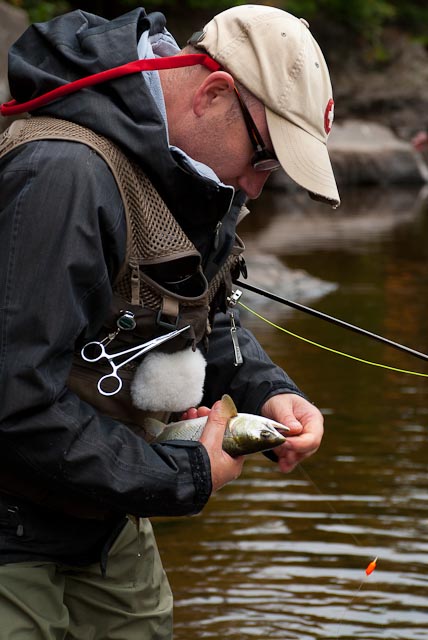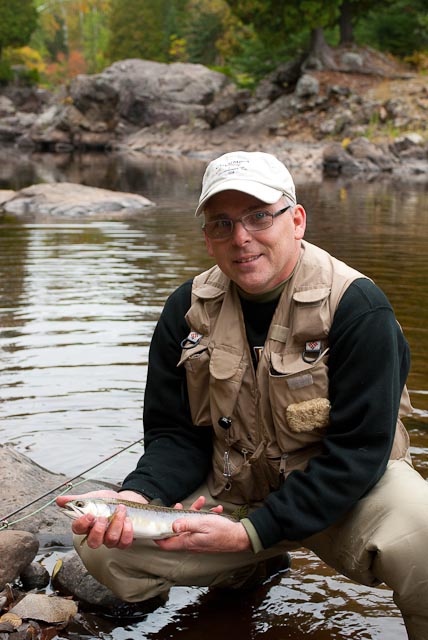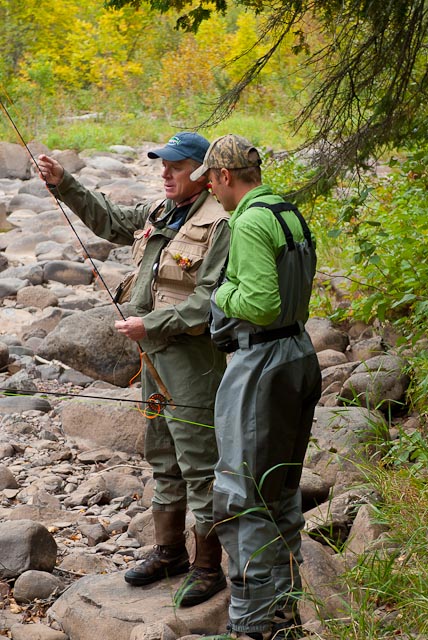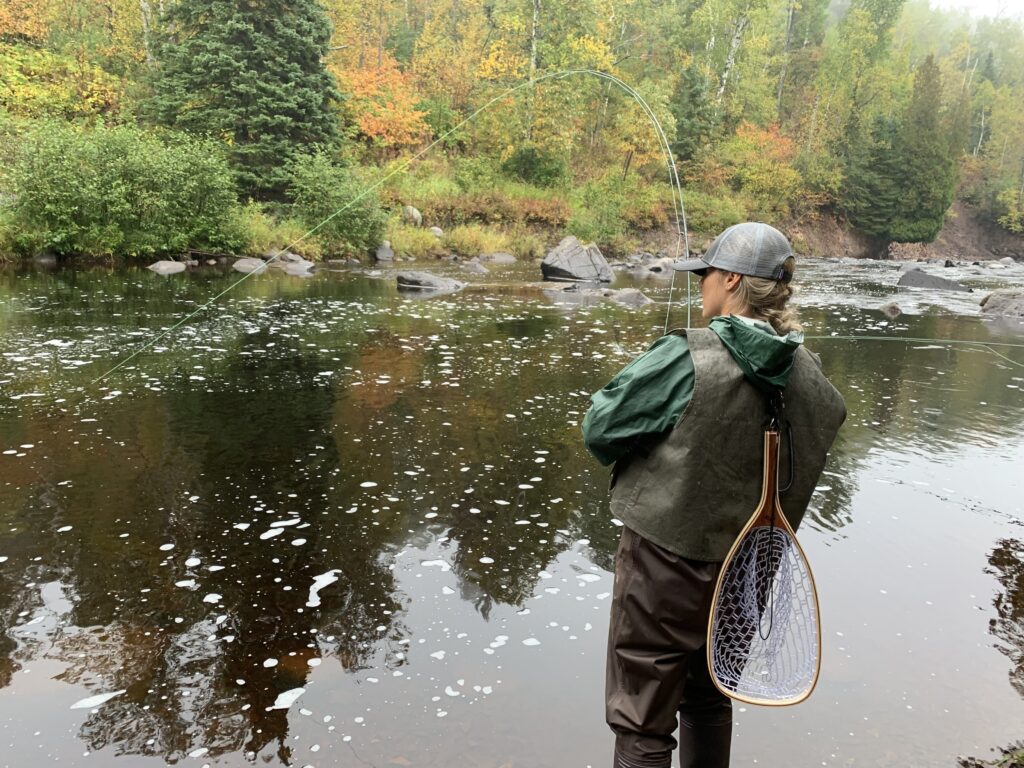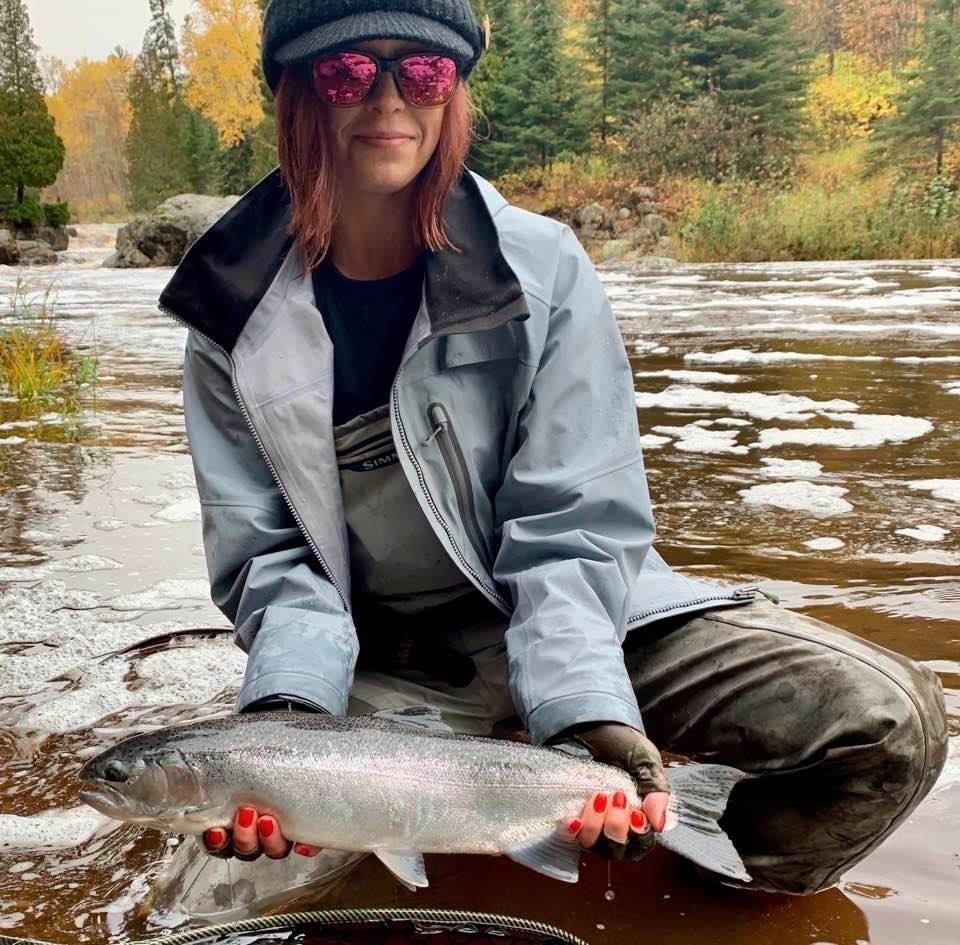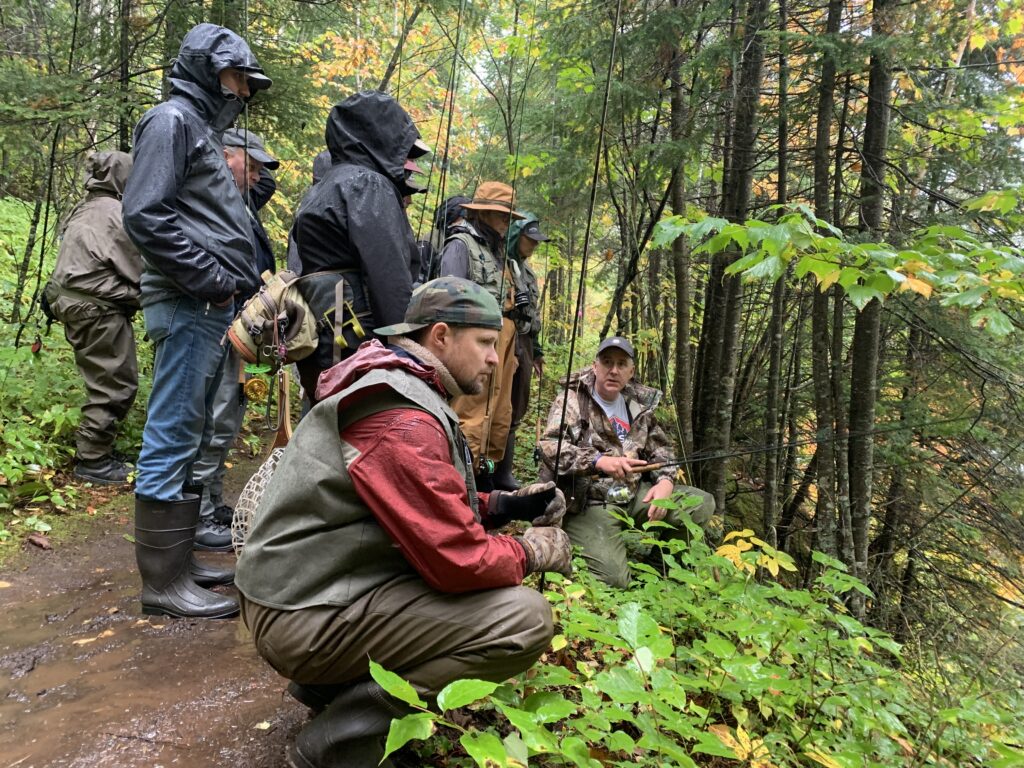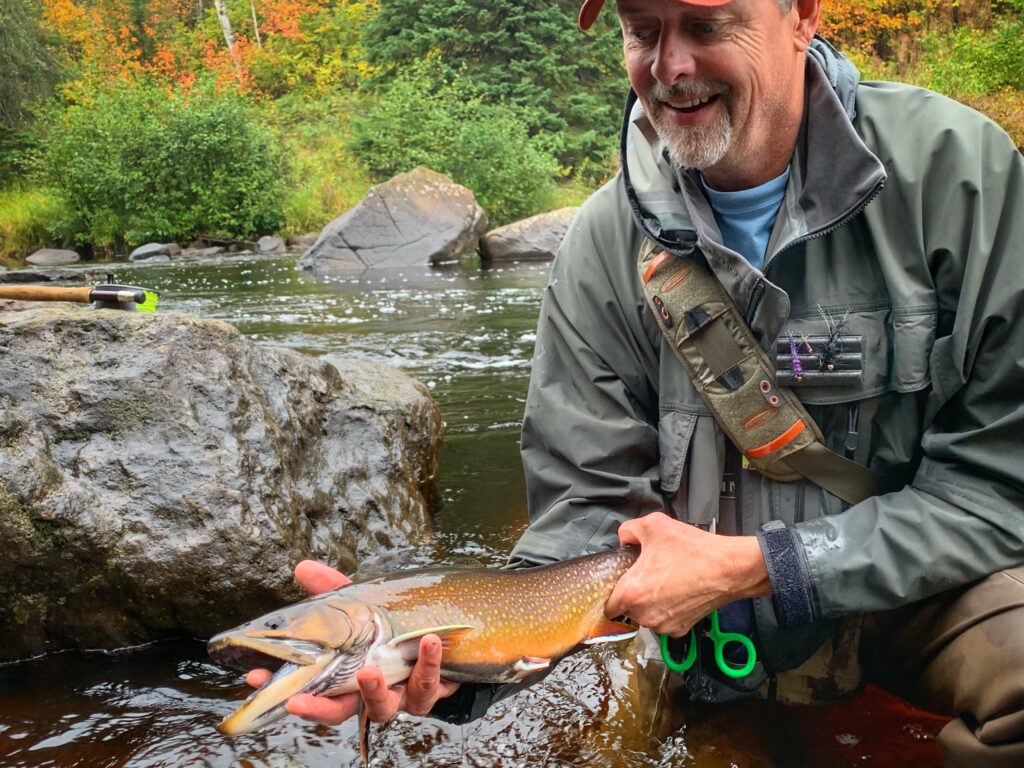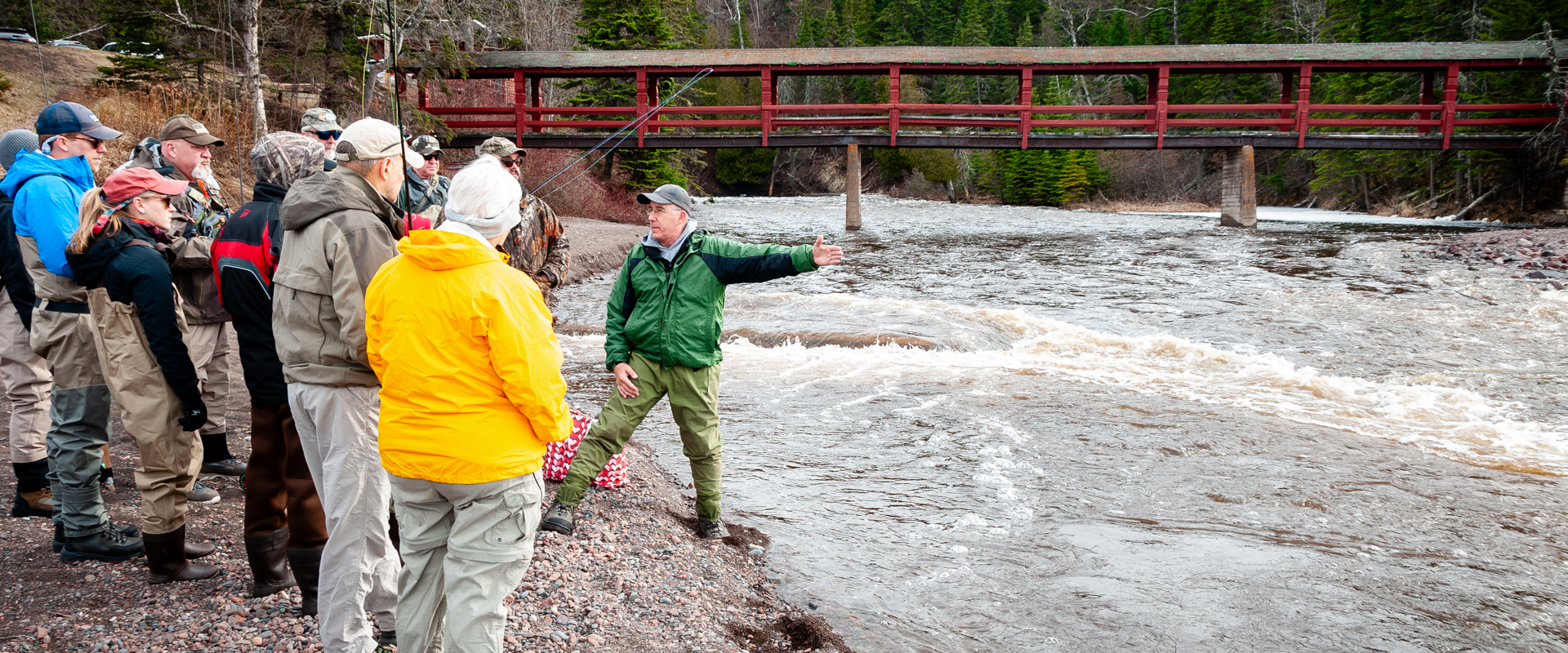
Comprehensive Streamside Clinics.
Spring steelhead clinic:
We review fishing equipment that is suitable for the techniques we commonly use for steelheading: rods, reels, line, knots, flies/yarn, and misc. extras.
We give a brief summary on steelhead and the spring spawning run. We also go into detail on how to read water and provide some tips on safe river crossing.
After some general overview our staff of instructors will guide the group to the water for some hands on instruction on locating fish, fly/yarn/lure selection, and presentation. Note this is not a casting class but some assistance can be provided as needed.
Fall streamside clinic:
We developed this clinic in 2011 as a way to introduce and teach anglers the fundamentals of fishing our North Shore streams and rivers, with a focus on steelhead and salmon. Timing the clinic in the fall was easy. The Lake Superior pink salmon migration is in full swing, the weather conditions are fairly stable and the rivers have lower water levels than during the spring steelhead migration making them much more manageable. Pinks also utilize some of the same migration and spawning waters as our steelhead and most north shore steelhead flies can catch pinks. This provides great opportunity for anglers to learn streamside.

Next Clinic Details:
Date: Saturday, May 18th, 2024
Time: 9:00am – 1:00pm
Location: Middle Shore River – North Shore, Lake Superior*
*River destination and map will be provided upon registration
Cost – No charge for this event
Donations to our organization are always welcomed if you choose.
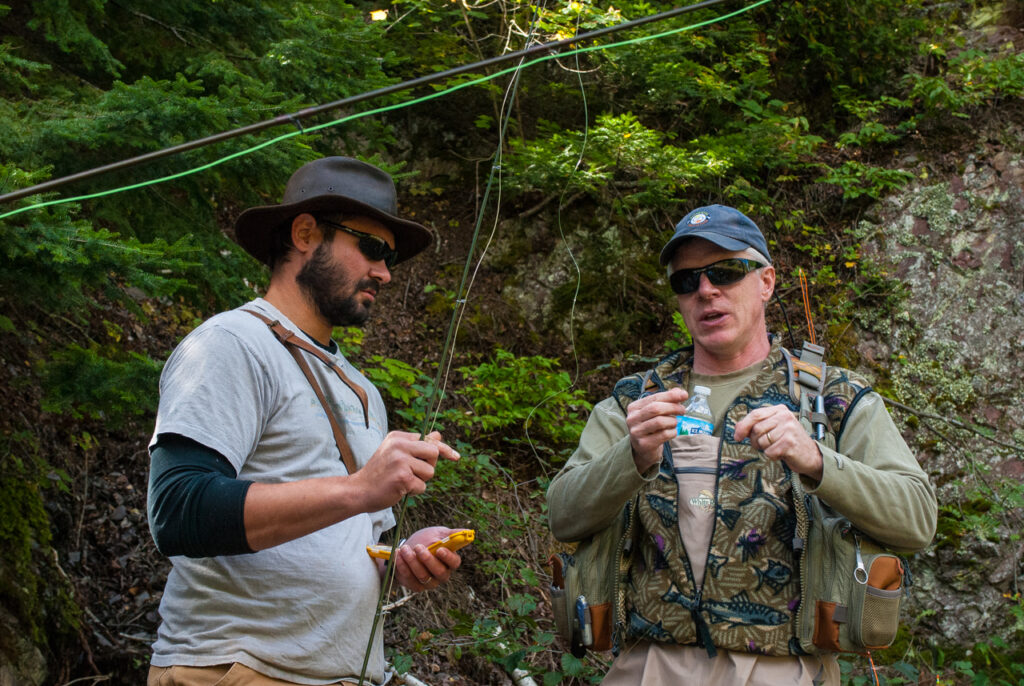
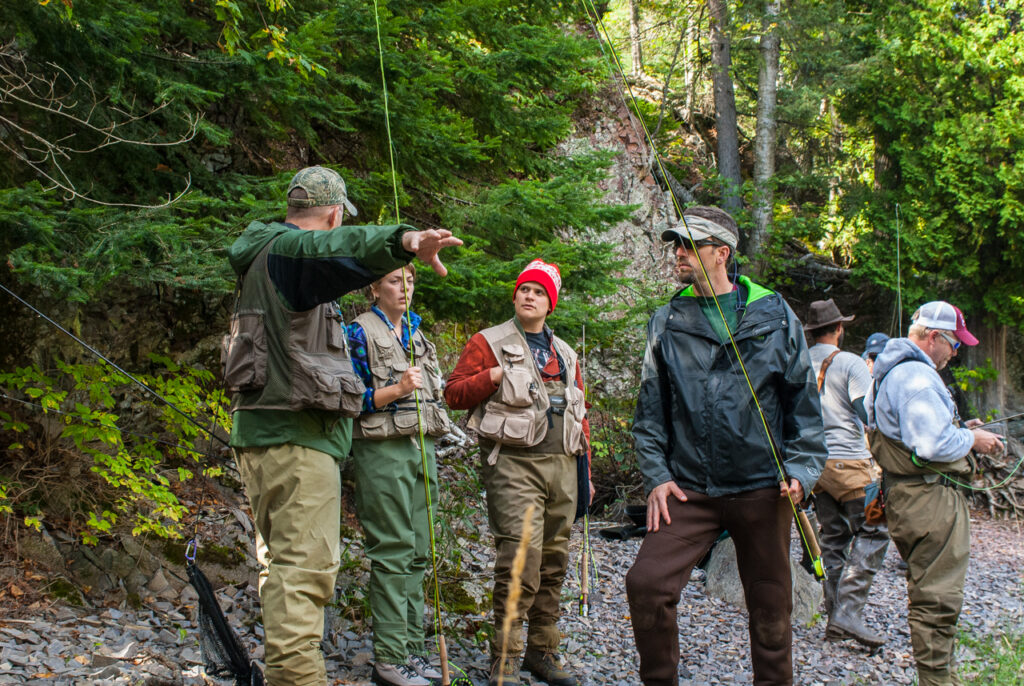
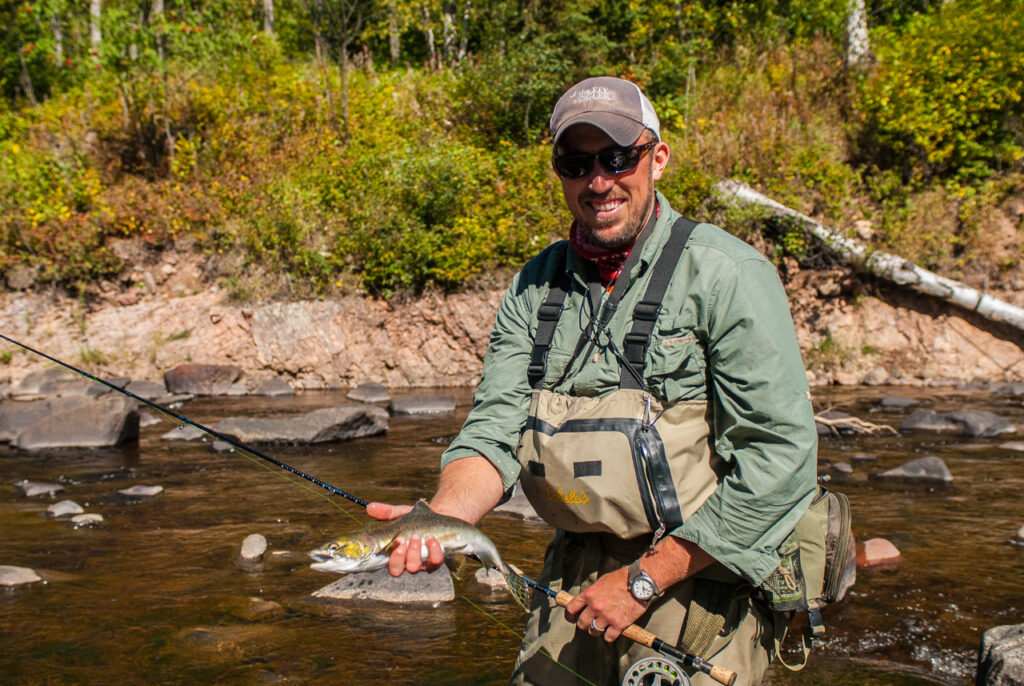
Who can Attend?
This clinic is geared towards anglers that have experience with their angling equipment and have some basic angling skills such as knot tying, and basic casting. This clinic is open to those who are able to freely maneuver the root covered dirt and rock trails along the banks of the river. We strongly encourage Parent/child pairs to participate in the clinic. All children 17 and under must register and attend with an adult to participate. We also encourage women and couples!!!!
What Does it Cost?
There is no cost for this event, but donations to our organization are always welcomed with gratitude. Our volunteer staff is donating their time and talents to teach and guide during this wonderful clinic. All donations received go right back into funding future clinics, community events, fisheries projects, and to further our conservation and outreach efforts. This clinic like all MNST clinics and events are only possible because of your generosity.
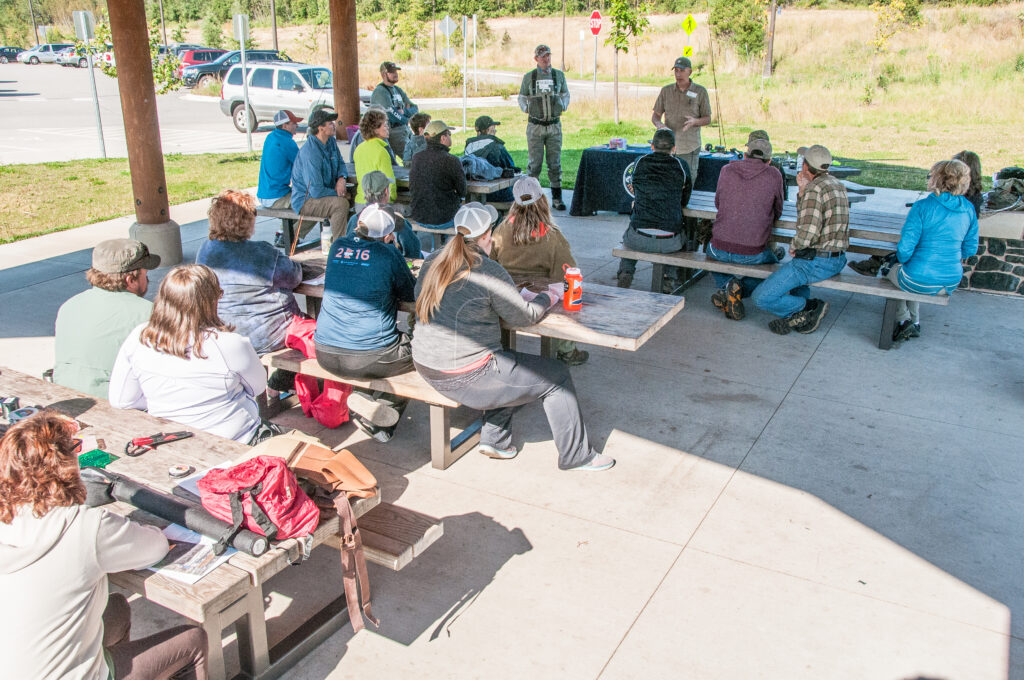
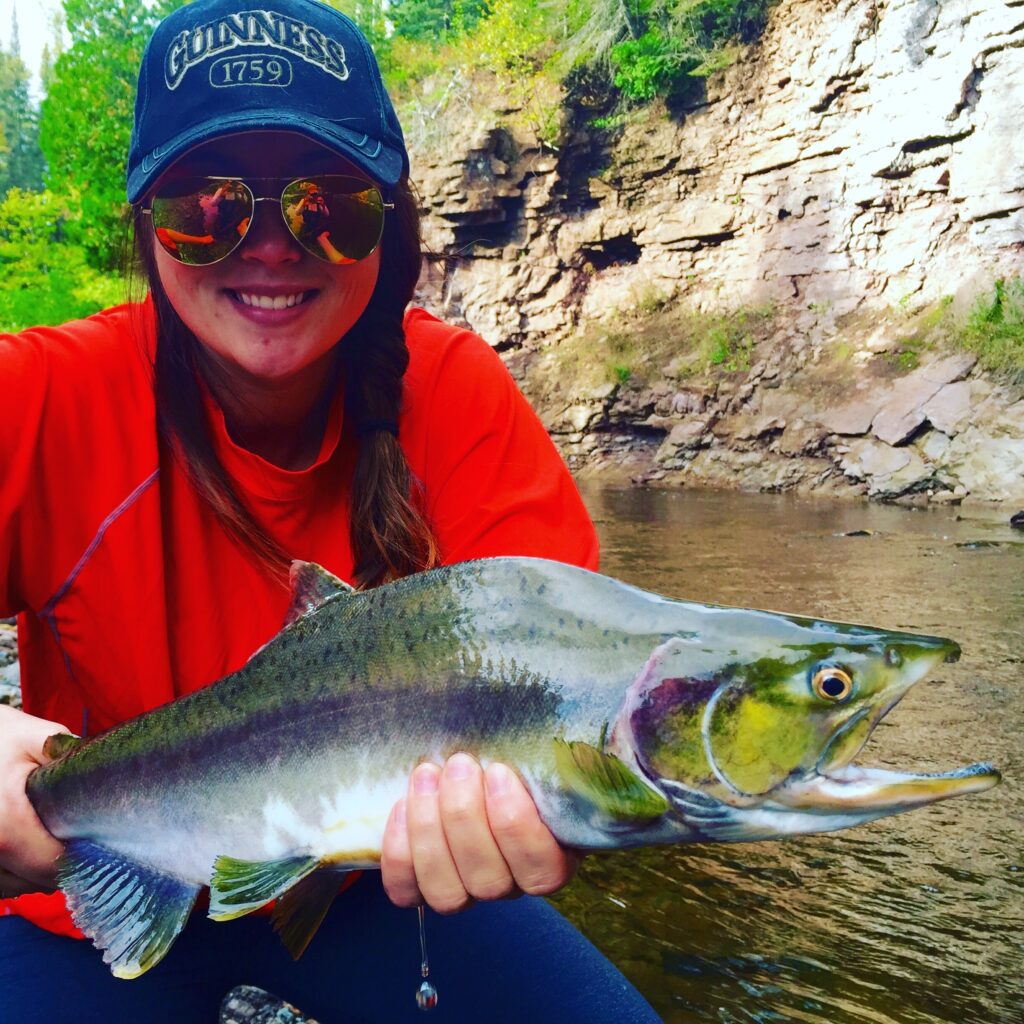
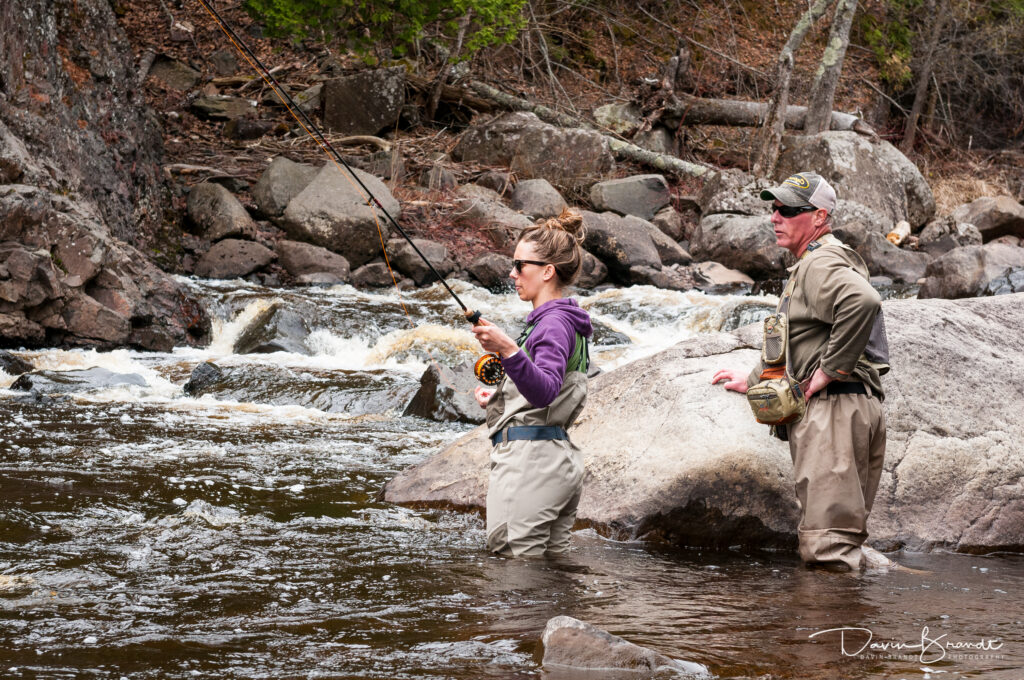
What will you learn:
During our fall clinic, our all-volunteer staff of seasoned anglers will teach you about salmon and trout; how they got here, why they were able to naturalize, and how their habitat/life-cycle is similar to steelhead. Our spring clinic will focus exclusively on our steelhead fishery.
For all our clinics we teach a little on how geology and limnology impact steelhead, trout, and salmon. We review fishing equipment that is suitable for steelhead, trout and salmon including: rods, reels, line, knots, flies, and misc. extras. We give a brief summary on all the trout and salmon that swim our waters and how and when to target them. We also go into detail on how to read water and the terminology for the different types of water/current within our rivers and streams. We try to keep the off-water portion to under and hour.
Once streamside, we will have some hands-on instruction on reading water, locating fish, fly selection, and presentation. We then will help anglers locate some hot spots and start fishing. Note that this is not a fly casting class or guided fishing trip.
What you need to bring:
First and foremost bring a positive attitude. You will need a MN fishing license with a trout stamp. You can purchase at MN DNR online or most Holiday gas stations on the drive. Bring your own equipment if you have it. If not we will have a few extra fly rods to use during the clinic. Waders are not required, but will allow you more angling opportunities. Bring your favorite flies too! we will have some as well for you to use, but it is always good to have a lot of back up flies.
Though spinning gear will work, we recommend fly fishing equipment (see below) to increase opportunities during your angling experience. Please note that we will be walking on rock, roots, and dirt trails to streamside destinations. Expect to walk approx. 1 mile round trip. Note too that we focus on entry level wading – no deep water, most wading is less than knee high. Wadding is not required, but light wading will give you more angling options to those with a good sense of balance. Wading is not necessary to partake in the clinic.
Megan’s story. Click here.
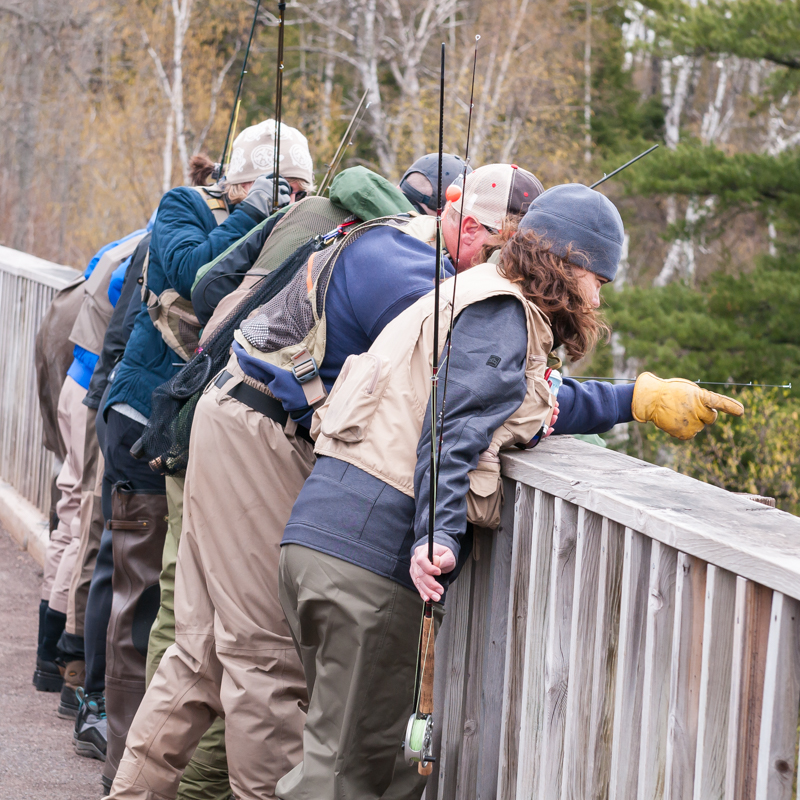
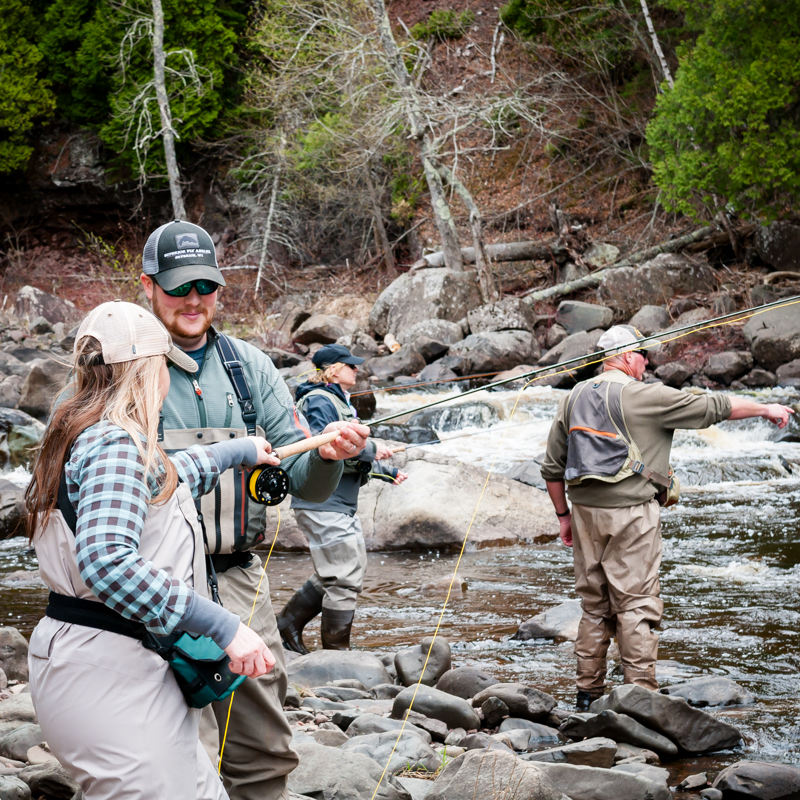
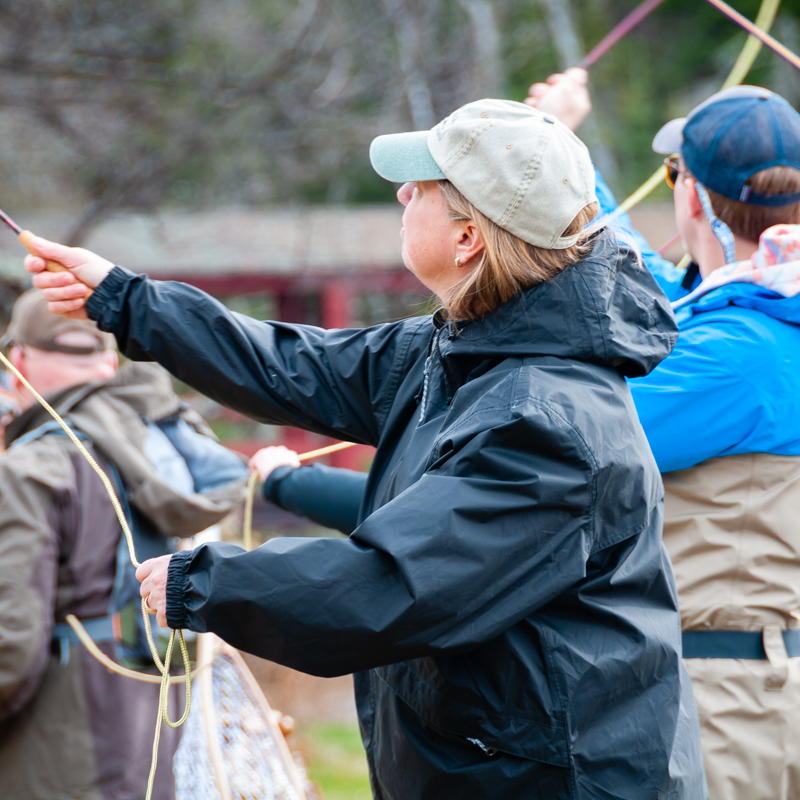
Fall & Spring Clinic – Suggested Equipment :
6 – 8 weight Fly Rod: 8 weight is a great spring rod, 6 weight is good for summer and fall. 7 weight is a good all around. If you plan too focus mainly on Steelhead, an 8 weight is our suggested rod.
6 – 8 Fly real with backing: This can be spooled with floating fly line, or running line (specific for drift fishing).
Running line can be either floating fly running line or 14 – 17lb. bright colored monofilament. This method does not follow the traditional fly casting technique, but rather more of what is called, chuck & duck. Weight is added to the line to help deliver your fly rather than relying on the fly line to deliver. We discuss in the presentation the value and effectiveness of each.
Flies: We will have some for use, but it is fun to have your own personal selection. We use a lot of egg patterns in pinks, orange, chartreuse, red most of the shades in between, sized in 6 – 10. Wooly buggers (sized 6 – 12), wooly worms (6 – 12), pheasant tail type nymphs (sized 8 – 14) work well as the water warm. Bright streamer patterns, and variations on nymphs that have some flash.
Waders: Hip boots will work, but we find waders a better option. Notice in the pictures on this page, anglers are kneeling or sitting in the water to release fish and for photos. There most angers rarely go above the waist, the added coverage is good security
Wader belt: Safety, Safety, Safety. Most waders come with a belt. Nothing fancy is needed, heck a rope will likely do. We prefer a belt made of a durable quick-drying material and a quick release buckle
Some other suggestions: Wading staff, net, forceps (hook removal), sunscreen, rain gear, warm base-layer clothing, and a camera.
Sunglasses – POLARIZED: A must have. They cut the glare allow great visibility in the water and cut down on fatigue from the sun.
Hat: Great for cutting down glare and protection from the sun
Wading boots: If using stocking foot waders (our favorite) we recommend good boots with either felt or the new alternative to felt design. cleats in the boots are a plus.
